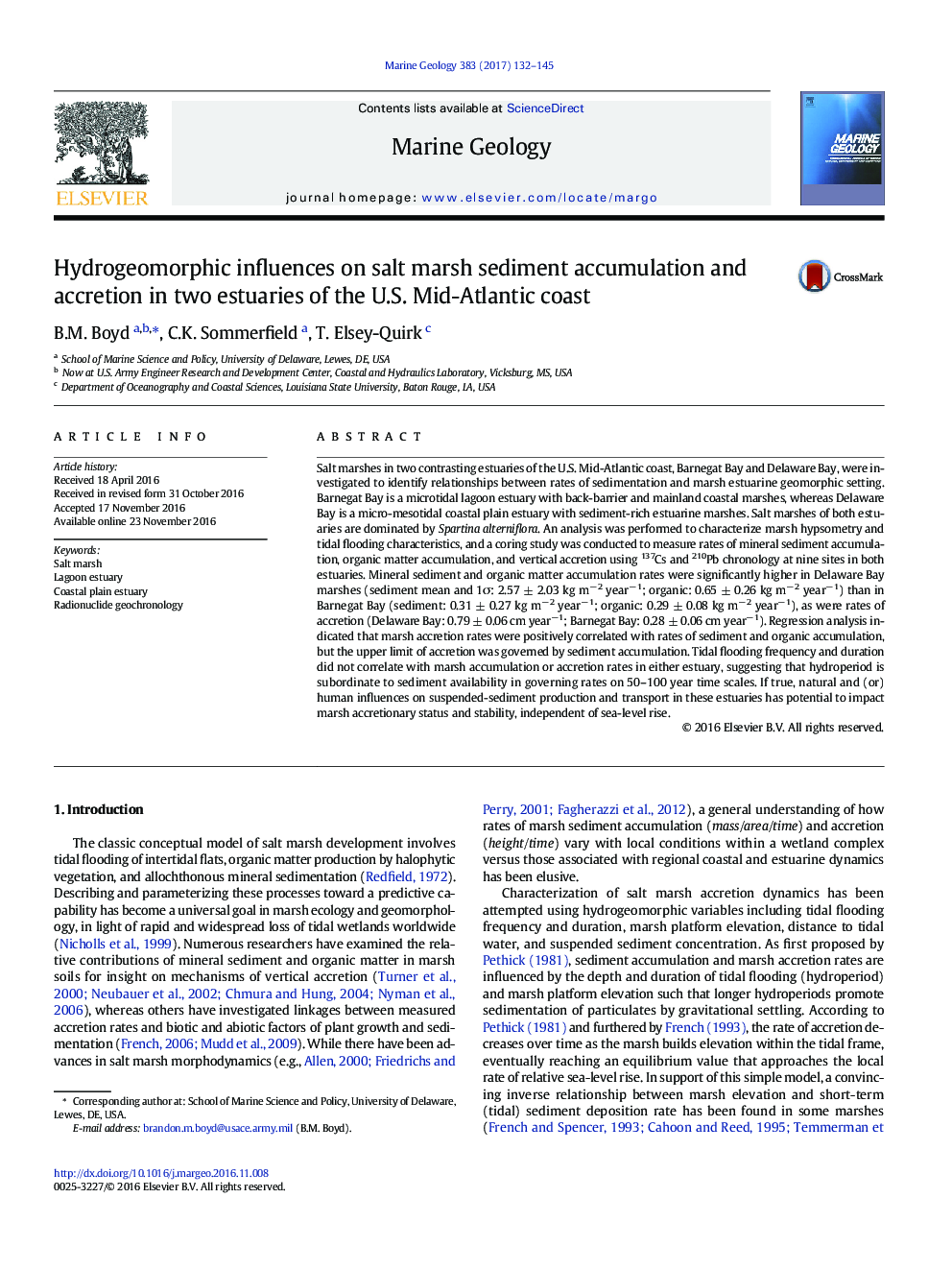| Article ID | Journal | Published Year | Pages | File Type |
|---|---|---|---|---|
| 5784458 | Marine Geology | 2017 | 14 Pages |
â¢Long-term rates of marsh accretion and mass accumulation in a coastal plain and lagoon-type estuary were comparedâ¢Accretion rates in marshes of both estuaries were correlated with rates of organic matter and mineral sediment accumulationâ¢Accretion and accumulation rates were significantly higher in marshes of the coastal plain estuaryâ¢Accretion and mineral accumulation rates did not exhibit the established inverse relationship with marsh elevation, distance to sediment sources, or other hydrogeomorphic properties
Salt marshes in two contrasting estuaries of the U.S. Mid-Atlantic coast, Barnegat Bay and Delaware Bay, were investigated to identify relationships between rates of sedimentation and marsh estuarine geomorphic setting. Barnegat Bay is a microtidal lagoon estuary with back-barrier and mainland coastal marshes, whereas Delaware Bay is a micro-mesotidal coastal plain estuary with sediment-rich estuarine marshes. Salt marshes of both estuaries are dominated by Spartina alterniflora. An analysis was performed to characterize marsh hypsometry and tidal flooding characteristics, and a coring study was conducted to measure rates of mineral sediment accumulation, organic matter accumulation, and vertical accretion using 137Cs and 210Pb chronology at nine sites in both estuaries. Mineral sediment and organic matter accumulation rates were significantly higher in Delaware Bay marshes (sediment mean and 1Ï: 2.57 ± 2.03 kg mâ 2 yearâ1; organic: 0.65 ± 0.26 kg mâ 2 yearâ1) than in Barnegat Bay (sediment: 0.31 ± 0.27 kg mâ 2 yearâ1; organic: 0.29 ± 0.08 kg mâ 2 yearâ1), as were rates of accretion (Delaware Bay: 0.79 ± 0.06 cm yearâ1; Barnegat Bay: 0.28 ± 0.06 cm yearâ1). Regression analysis indicated that marsh accretion rates were positively correlated with rates of sediment and organic accumulation, but the upper limit of accretion was governed by sediment accumulation. Tidal flooding frequency and duration did not correlate with marsh accumulation or accretion rates in either estuary, suggesting that hydroperiod is subordinate to sediment availability in governing rates on 50-100 year time scales. If true, natural and (or) human influences on suspended-sediment production and transport in these estuaries has potential to impact marsh accretionary status and stability, independent of sea-level rise.
